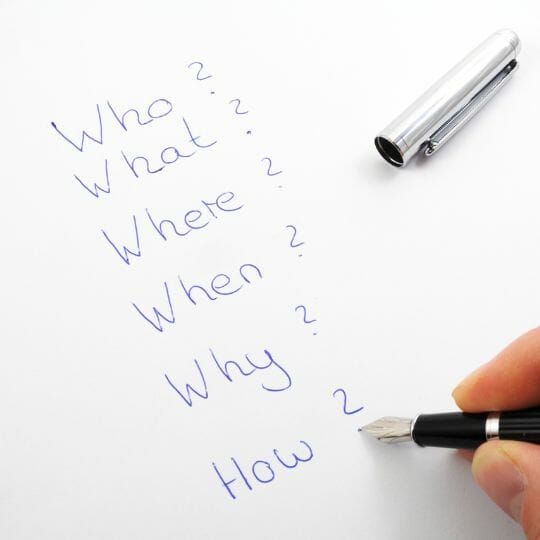
If you’re a coach, it is essential for you to have your own coach. But what if you can’t afford to pay a coach? Co-coaching – or swapping sessions with another coach – is a great way to give and receive coaching and gain benefits. Coaching is much more effective if you are working with the right person – and today I’ll describe how to set up a productive, connected co-coaching agreement with a fellow coach.
A lot of coaches finish their qualifications and start looking for clients but have not been coached themselves.
Why is this important? There are a few good reasons.
Firstly, if you’re going to communicate the value of what you do as a coach, you really need to speak authentically and from experience. Imagine trying to sell a car if you didn’t drive one yourself. Imagine trying to sell a skincare product that you didn’t use yourself.
Being coached yourself gives you authenticity and credibility.
Secondly, when you decide to be a professional coach, you are pretty much committing to your own personal growth.
Once again this is about authenticity. If you are not willing to grow and change yourself, how can you be trusted to help others to develop new habits and pursue their own personal growth?
As one professional coach in the US says – you can only take a client as deep as you have gone yourself.
Thirdly, everyone has blind spots. Yes, you can coach yourself through the process of self-talk, reflection and journalling, but there are things about yourself and limiting beliefs that you can’t see. So, no matter how good of a coach you are, you can’t do it all on your own.
Finally, it is through the process of coaching and experiencing the discomfort of change that you really appreciate what your clients are going to go through, how to describe the benefits and value of coaching and gain lived experience in problem-solving, navigating a journey and defining success on your terms. By working with another coach, you might also learn a few new coaching techniques as you get to increase your skills and go deep on areas that are important to you – perhaps deeper than you would on your own, or with your own clients.
All of this leads to greater resonance with your audience, more impactful marketing, and better coaching skills.
To work with a coach, you have a couple of options.
You can hire a coach and pay a fee for service which suits some people.
Alternatively, you can find a peer coach to work with and do a barter, swapping sessions with each other – which I like to call co-coaching.
The great thing about co-coaching is that the coaching itself is often easier because you are both familiar with the concept of coaching, the language of coaching, and how a session is run. This makes things feel more comfortable and it’s easier to get into a flow. Great if you are new to coaching and lacking a bit of confidence!
Also, co-coaching has zero cost. If you are on a budget, co-coaching is a cost-effective way to help you get some practice, experience and personal growth.

Like any coaching relationship, it’s important that you make sure you have a good fit with the person you are going to work with.
You can identify a co-coaching partner through your coach training school and/or alumni, or through your industry association (e.g. HCANZA).
Once you’ve identified someone you might like to work with, it’s important to make sure you are a good fit for working together.
I like to have a good-fit call with any prospective client, and it’s a great practice to do it with a potential co-coaching partner.
A good fit call is a short conversation (usually around 30 minutes) where you gauge your suitability for working together.
You can use this same process for a co-coaching relationship or to qualify your prospective clients!
The goal is to see if you have the right chemistry – that is, rapport and relationship – and both feel willing to coach each other.
There is no set-in-stone way to run a good fit call, but it might generally involve asking each other some general questions to get a sense of who the person is and what is important to them.
Here are some sample questions you can ask:

Asking a few questions like this is usually enough to get a sense of the person and how aligned you are in terms of demographics, personality, values, priorities and stage of life.
Be very present in the conversation so that you can do the essential piece – which is checking in with yourselves about the chemistry you have with the other person (somatic awareness).
There are three questions you can ask yourself during the conversation:
For example, do you notice tightness or tension in your body, or a tingling, free-flowing feeling? Where do you feel that?
For example, do you feel overwhelmed, tentative or drained, or do you feel calm, open and energized?
For example, are you thinking this person seems like hard work, or I’m not sure about them, or they’re too soft/driven for me, or are you thinking this person is aligned, we are getting on well, I feel good about this?
This checking-in process leads to one of two outcomes – you’re not a fit, or you are a fit.
There’s really no in-between.
If you feel that the two of you are not a fit, that’s ok, you can decide together openly and honestly. In this case, you can be honest and let them know that you don’t think it’s the right fit but it was lovely to meet them and have the introduction.
If this was a client, you might say that you feel there is another coach who would be a better match for them and be able to give better and more relevant support, and would they like you to pass on the other coach’s details?
If you feel you are a fit, you can establish an agreement – I would recommend a set number of sessions and then review. Allow enough time and sessions for the person to establish (or get back on track) with at least one habit.

Once you have established that the rapport and relationship are suitable, it’s time to set up a co-coaching agreement.
With a client, you would normally agree on the terms, payment and duration of coaching, and it’s a similar process for co-coaching (without the payment).
It’s important to have an agreement upfront so that you can ensure you both achieve your goals and are committed to the process. This can be even more important when no money changes hands; as financial investment can strengthen commitment.
The last thing you want to do is start cancelling or postponing sessions, losing enthusiasm and getting to busy.
Treat your co-coach with the integrity and respect that you would a client.
You could either ask the coach to complete your normal client agreement, or, you can establish a less formal written agreement in a document stating the terms of the arrangement so you are both clear on the expectations and commitment.
Your agreement would normally be a minimum of 8 weeks (at least 5 sessions) for working on one or two new habits.
If you were just getting an existing habit back on track, you’d be looking at a minimum of 6 weeks (at least 4 sessions).
You can decide on the cadence of sessions depending on how much support you feel you would need. Starting weekly is a good idea for at least 3 weeks, then you could continue that way, or perhaps move to fortnightly at the time if you both agree.
It’s also a good idea to schedule at least three sessions in advance so you both clear your schedules to make time to focus and give your energy to the coaching relationship.
Today, we discussed the many reasons why it’s so valuable for coaches to work with their own coaches, including depth of experience, skill development, authenticity, personal growth and marketing insights.
We also covered how to conduct a good fit call to ensure there is suitable rapport and relationship between you, including sample questions to ask each other, and three questions to ask yourself to honestly reflect on the chemistry and suitability of this partnership.
If you’re not fit, be honest and thank each other for the conversation.
But if you are a fit, you can set up a co-coaching agreement that covers how long you will work together, the cadence of sessions, and which days and times suit both parties. Having something in writing ensures the commitment of both.
Understanding who you are and what you need will allow your business to thrive! If you’re truly ready to break old habits and get out of the rut I encourage you to check out the Habitology membership.
Learn more here: